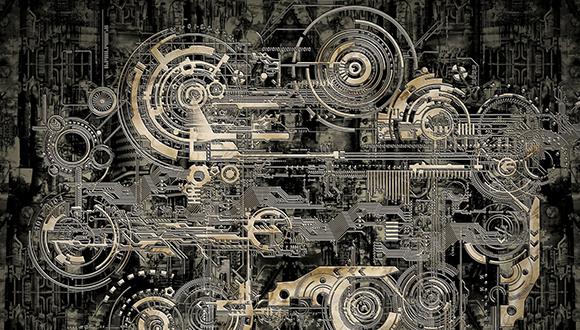School of Mechanical Engineering: Michael Slavutin
~~
SCHOOL OF MECHANICAL ENGINEERING SEMINAR
Monday, March 23, 2020 at 14:00
Wolfson Building of Mechanical Engineering, Room 206
Graph Theoretical and Geometrical Investigation of Kinematics and Singularity of 3D Parallel Mechanisms
Michael Slavutin
PhD Yoram Reich
This work presents geometrical and graph theoretical methods for analysis of mechanisms in three dimensions. In particular, the singularity analysis by geometric methods of parallel mechanisms is presented. The singularity of the most common three-dimensional mechanism, the 6/6 Stewart platform is fully analyzed. The Aronhold-Kennedy theorem is used for this analysis. This analysis is based on the properties of the reciprocal product of two screws, which depends only on the relative position of the two screws. First, the singularity criterion is developed assuming that there exist two lines that cross four of the six legs of the platform. The instantaneous screw axis and the forces in the legs are found. Next, the above assumption is relaxed and the singularity criterion is developed in a most general configuration. For this purpose, the two degrees-of-freedom mechanism obtained by removal of two legs of the platform is analyzed. The line that is a locus of all possible instantaneous screw axes of such mechanism is found. It is proved that the mechanism is singular if three loci of the instantaneous screw axes of three such sub-mechanisms share a common perpendicular. This criterion is expanded to a general parallel mechanism. Examples of analyzing complex mechanisms with this criterion are shown.
The analysis of singularity of a multi-platform parallel mechanism is performed by building an equivalent simpler mechanism using the reciprocality relation. The two-platform and single- and two-circuit three-platform mechanisms are reduced to a single-platform mechanism. It is shown that the three-circuit three-platform mechanisms are irreducible except for certain cases. This method is shown to be applicable to even more complex mechanisms.
The method used for analysis of the singularity of the multi-platform mechanisms is developed formally into a graph-theoretical duality that is used for kinematic and static investigation of a mechanical system. In this duality, a node of the dual graph that corresponds to a platform of a dual mechanism is placed in a face of a graph of the original mechanism. Edges of the dual graph that correspond to the constraints of the dual mechanism cross the edges of the primal graph and are built so that the dual edge is reciprocal to any primal edge crossed by it. The algorithms for determining the geometry of the dual edges are developed in the first part of this work. Since these graphs are multigraphs, there are various possibilities of building the dual graph. Therefore, the building of dual to a dual graph results in a graph that may be different from the original one. This allows simplification of the original mechanism by successful application of the dual operation, preserving the kinematic and static properties of the original systems.


